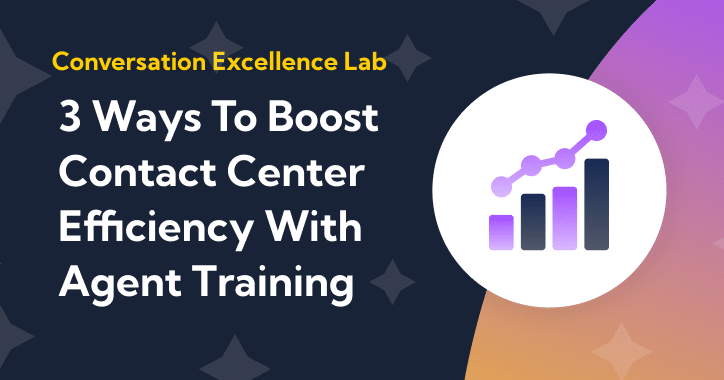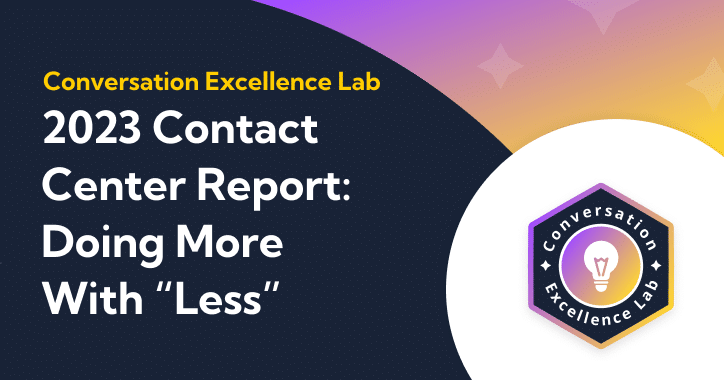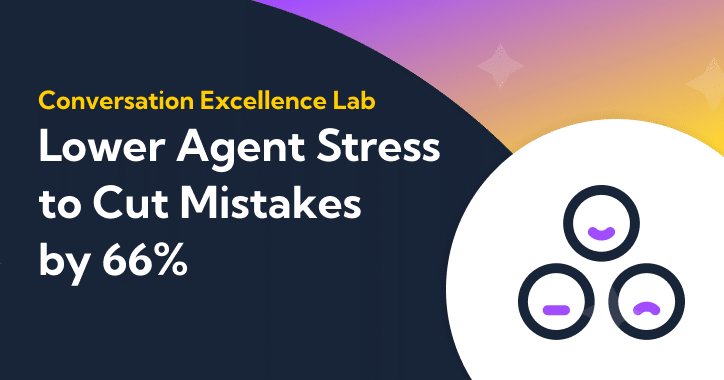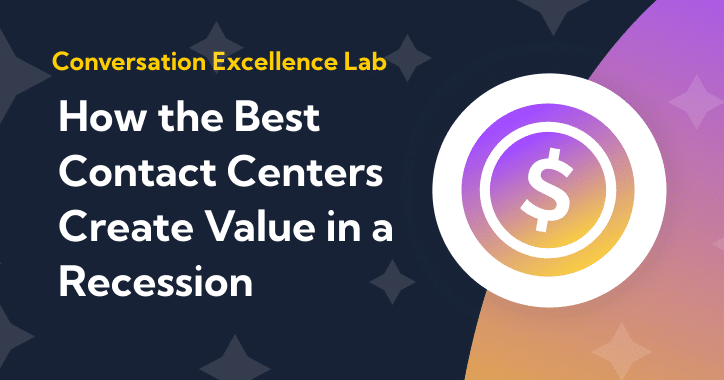Attrition is a vital issue at contact centers: every year, about 30-45% of contact center employees leave for voluntary or involuntary reasons. In effect, this means that contact centers have to re-hire and re-train nearly half of their workforce year over year, leading to lower productivity and higher expenditures.
Taking into account the cost to terminate an employee and hire and train a replacement, as well as the loss of productivity in the meantime, the cost of losing an employee can be up to 2x their salary.
Contact centers want to keep their employees happy and engaged, and Balto wants to help them do that. To this end, we surveyed over 2,000 contact center employees and asked them to tell us a bit about themselves, and what they need in order to be fulfilled and successful in their roles.
Here’s a sneak peek at what we found:
- In general, employees are happiest 3-5 years into their careers, but happiness continues to rise for those in leadership roles the longer they work.
- In terms of benefits, women were more likely to value flexible work schedules and their relationships with coworkers, while men cared most about whether their industry was growing, and if their pay was competitive.
- Pay varies greatly by industry, job function, tenure, education, whether an employee is hourly or salaried, and gender. Even though there is a significant pay gap between men and women, there is not as large of a difference in pay satisfaction.
- Hybrid workers were happier and better paid than virtual and in-person employees. Most hybrid workers were men: men made up 47% of our survey but 60% of hybrid workers.
- Both an employee’s motivation to join an industry and their 5-year career outlook varies greatly as a function of age and gender, and represent shifting priorities along life stages.
Get a Copy of the Report in Your Inbox
Read the results on your own time or share them with your team. No strings attached.
Subscribe to future Conversation Excellence Lab reports.
Demographics
Of our 2,062 respondents, 1,342 were front-line employees, meaning they spent most of their day initiating or receiving calls, and the rest were in leadership roles. The most represented contact center use case among front-line employees was customer service at 55%, and the least represented was lead generation at 2%.
Figure 1: Breakdown of Attrition Survey Respondent Use Cases
Of the 720 employees who worked in leadership, 43% were team leads (supervisors, managers, etc.), 38% were in executive leadership, and 19% were in sales leadership roles (account executives, account managers, etc.).
The majority of our respondents (63%) were between the ages of 25-44; 13% were under 24 years old and 23% were over 45 years old.
Figure 2: Breakdown of Attrition Survey Respondent Age Ranges
Genders were closely distributed at 53% female respondents and 47% male respondents. The differences in representation and sentiment within these categories had great variance, as we’ll explore later in this report.
Job Satisfaction
Gender
We asked our respondents: On a scale of 1-7, how much do you enjoy the day-to-day tasks of your job? Men and women scored similarly on enjoyment at 5.52 and 5.60, respectively. Although the sample size was very small, non-binary people scored lower at 4.75.
Industry & Job Function
Industry-wise, the average enjoyment for front-line employees was highest in Professional Services and IT, and lowest in Insurance and Collections. For those in leadership, it was highest in Real Estate and Government and lowest in Utilities and Home Improvement.
Figure 3: Industry and Job Function
The job functions with the highest enjoyment overall were Executive Leadership (6.07), Sales Leadership (5.73), and Recruiting or HR-Related Support (5.71). Those with the lowest levels of enjoyment were in Collections (5.24), Customer Service (5.32), and Sales (5.44).
Tenure
In general, job enjoyment stayed relatively stable across tenure. Those who had been in their job for < 6 months reported an average score of 5.56 when asked to rate their job enjoyment on a scale of 1-7. Enjoyment then reached its lowest point at 5.41 between 1-2 years of employment before peaking at 5.64 between 3-5 years.
In terms of job function, employees in leadership positions saw greater enjoyment levels at each point of tenure except < 6 months, where those in front-line positions were marginally happier on average. The largest difference in happiness between front-line and leadership employees was at the 1-2 year mark, when front-line employees rated their enjoyment at 5.19 and leadership employees rated their enjoyment at 5.90.
Figure 4: Tenure and Enjoyment by Position
Motivation for Joining Industry
We asked respondents why they joined the contact center industry to begin with, and those with the highest levels of job satisfaction responded that they either “wanted to join a growing industry” or “saw a lot of opportunities for career advancement in their new role.” Those with the lowest levels of satisfaction joined the contact center industry because they “needed a job fast” or valued the “pay and/or commission.”
Women cared more on average about having a flexible work schedule and working alongside other people, while men cared most about whether the industry was growing and if the pay appealed to them.
How do you raise job satisfaction levels and keep employees around longer? We found that work enjoyment was positively correlated to pay, satisfaction with pay, whether or not someone was a salaried or hourly employee, level of education, and satisfaction with advancement opportunities.
If you find employees who are driven by growth and give them adequate opportunities for personal and professional development as well as a dependable salary, you can shore up their satisfaction levels and achieve lower attrition.
Pay
Motivation to Join Industry
Those who stated that they started working at a contact center because they needed a job fast were the least satisfied with their pay, followed by those who were motivated by having a flexible work schedule. The most satisfied with pay were those who saw adequate opportunities for themselves for advancement and growth.
Interestingly, those who joined their industry for the pay and/or commission had only the third-highest satisfaction with pay, possibly because they are compensation-motivated and may need more regular raises or promotions to maintain their pay satisfaction.
Industry & Job Function
The job functions that earned the most hourly pay on average were Executive Leadership ($23.59) and Team Leadership ($21.19). The lowest hourly pay on average was for Lead Generation ($16.70) and Sales ($17.17).
Figure 5: Hourly Wage by Job Function
Figure 6: Yearly Salary by Job Function
For front-line employees, the most profitable industries were Construction ($21/hour) for hourly workers and Logistics ($90,000/year) for salaried employees. The least profitable was Travel & Hospitality ($15/hour) for hourly employees and Government/Non-Profit ($48,750/year) for salaried employees.
For leadership roles, the most profitable industry was Collections ($111,666/year) and the least profitable was Travel & Hospitality ($54,266/year). Read our full analysis of contact center industry trends here.
The industries most satisfied with salary were Telecommunications & IT and Construction, and the least satisfied were Travel & Hospitality and Healthcare. The range of averages was 4.95-5.67 out of 7.
Figure 7: Satisfaction with Pay by Industry
Gender
Whether salaried or hourly, front line or leadership, men earned $1-2.50 more than women per hour or between $10-15,000 a year.
Figure 8: Differences in Salary Between Men and Women by Job Function
Controlling for education, men still made more than women. Men with high school diplomas made roughly $4,000 more per year on average than women with high school diplomas, and among those with advanced degrees the gap widened to roughly $15,000 a year.
In terms of tenure, men with <6 months of experience made $17.36/hr on average, while women of all experience levels made an average of $17.77 an hour. At the beginning of their careers, men make nearly as much per hour as the average woman.
Men and women both made the most in Executive Leadership and Claims functions. Men made the least in Lead Generation and Customer Service, while women made the least in Collections and Sales. The function with the lowest wage gap was Customer Service, where men only made an average of $432/year more than women.
Even though there is a significant pay gap between men and women, there is not as large of a difference in pay satisfaction. On a scale of 1-7, women reported a score of 5.1 and men came in at 5.5. Although women make 82% of what men make in the contact center industry, they are 93% as satisfied with their pay.
Tenure
Hourly pay was positively correlated with tenure; salary was too, but less so, with stagnations between the 1-5 year range.
While pay was directly correlated to tenure, satisfaction with pay was not. Employees were the least satisfied initially when their pay was the lowest, but satisfaction remained mostly steady otherwise.
Keep in mind: pay and satisfaction with pay are two very different things. In order to make sure your employees are satisfied with their pay, check in on their expectations, trajectory, and goals, and make sure those are in line with what you can realistically provide.
Bonus points if you conduct a gender-pay audit across your organization: 78% of companies have a gender pay gap that favors men. You can take a step towards equality in your organization by taking responsibility for discrepancies in your employees’ salaries. In a female-dominated industry, pay equity will go a long way in cutting down on attrition.
In-Person vs. Virtual Work
Overall, 55.3% of respondents reported working fully in person, 25.6% reported working in a hybrid model, and 19.2% reported working fully remotely. Check out our full analysis on in-person vs. remote work here.
Figure 9: Breakdown of Attrition Survey Respondents by Remote, Hybrid, and In-Person Work
Gender
While women made up 53% of the survey, they made up 57% of in-person workers and 58% of virtual workers. Men made up 47% of the survey but 60% of hybrid workers. This may have to do with advancement or the industries men and women are more or less likely to work in, and whether those positions or industries tend to follow in-person, virtual, or hybrid models.
Education
In general, we found that education was positively correlated with whether someone worked in-person. The higher the education level, the more likely they were to work in a hybrid work environment.
Pay
In terms of pay satisfaction, hybrid workers were most satisfied with their pay. They also showed higher satisfaction levels across the board for job advancement and job enjoyment. Hybrid workers also made the most on average: there was nearly a $6,000 difference between the average yearly pay of in-person and hybrid workers.
Industry & Job Function
The industries most likely to work in person were Retail, Logistics, and Construction, while those most likely to be remote were Insurance, Telecommunications & IT, and Collections.
Whether or not a manager can offer hybrid flexibility to their employees can be a matter of industry and role, but our survey showed that workers are the most satisfied when they are able to work in such an environment. Flexibility between working in person or virtually is one of the key benefits a manager can utilize to combat attrition rates.
Motivation to Join Industry
Responses varied widely to the question “What motivated you to join the contact center industry” based on education, age, gender, and more. You can reference our full analysis here.
Education
In terms of education, those with a high school diploma or GED were most likely to be motivated by needing a job fast and least likely to be motivated by wanting to join a growing industry. Those with a 2-year college degree were similarly motivated by needing a job fast and cared least about learning a new skill.
Conversely, those with a 4-year college degree cared the most about joining a growing industry and those with advanced degrees cared most about learning a skill. Both groups cared least about needing a job fast.
Age
The answers also depended on the respondent’s age. You can read more about age and motivation in the contact center here.
Figure 10: Motivation to Join Industry by Age
Industry & Job Function
Patterns also emerged on an industry and job function level. For example, those who stated that they wanted to work with other people were most likely to work in Customer Service or Professional Services and least likely to work in Claims or Home Improvement.
Those who were motivated by pay or commission were most likely to work in Lead Generation, Utilities, or Home Improvement, and least likely to work in QA or Logistics. Employees who expressed needing a job fast were most likely to work in Customer Service or Retail, and least likely to work in Recruiting/HR Support or Manufacturing.
The first thing you should do when considering the problem of attrition is ask yourself what motivates your employees. The answer will vary depending on various factors, including your employee’s industry, job function, education, age, gender, and more.
If someone is motivated by flexibility, see if you can give them more PTO. If they want to learn a new skill, see where you can invest in their professional development. Once you are armed with the knowledge of what your employees want, you will be better able to address retention issues within your organization.
5-Year Outlook
The flipside of asking contact center employees why they joined their industry was asking them where they saw themselves in 5 years, and what would make them stay at or leave their job. The options for where they saw themselves in 5 years were:
- In my current role at another contact center
- In my current role at my current company
- In a more senior role at my current company
- In a more senior role at another contact center
- In another industry & job altogether
- Retired
The largest motivator for staying at a job was pay, but answers here varied along with a variety of factors such as gender.
Gender
More women than men listed pay as their primary motivator at 54.17% vs. 45.91%. Women were also more motivated by their fellow coworkers or management (7.34% vs. 4.97%) and job flexibility (5.75% vs. 4.39%).
On the other hand, more men than women said that they would stay at their current job if they received a promotion (11.11% vs. 5.36%) or gained increased job security (2.34% vs. 0.99%).
Age
When asked where they saw themselves in 5 years, respondents’ answers revealed shifting life-stage priorities across lines of age:
Figure 11: Five-Year Outlook by Age
Industry & Job Function
Clear divisions also emerged along variables of industry and job function. Those who saw themselves in a more senior role at their current company in 5 years were most likely to work in Recruiting/HR Support, Team Leadership, Utilities, or Insurance, and least likely to work in Claims, Sales Leadership, Home Improvement, or Transportation.
Those who saw themselves in a different industry or job altogether were most likely to work in Customer Service, Claims, Transportation, or Retail, and least likely to work in Executive Leadership, Technical Support, Telecommunications & IT, or Financial Services. If respondents saw themselves retired in 5 years, they were most likely to work in Sales, Claims, Real Estate, or Insurance, and least likely to work in Recruiting/HR Support, Collections, Utilities, or Construction.
Education & Tenure
Those who saw themselves in another industry & job altogether in 5 years tended to have the shortest tenure in the contact center industry. They also had the lowest educational attainment. The highest level of educational attainment belonged to those who saw themselves in a more senior role at their current contact center in 5 years, and the longest tenures belonged to those who saw themselves retired in 5 years.
Pay
The employees most satisfied with pay were those who saw themselves in their current role in 5 years and the least satisfied with pay were those who saw themselves in another industry or job altogether.
Interestingly, 83% of those who saw themselves in another job or industry altogether were hourly — only 17% of these respondents were salaried. Whether or not someone is salaried had a strong positive correlation with whether or not they wanted to leave their job.
After you ask your employees what motivates them, ask them where they see themselves in 5 years and listen to their replies with openness. The signs of attrition are often there long before an employee gives notice, and aren’t always personal: they may have to do with factors like life stage, industry, and job function. Once you know what your employees want for themselves, you can outline a growth path to excite the ones that want to stay, and work on creating value — through benefits, flexibility, and more — for the ones that want to go.
Subscribe to future Conversation Excellence Lab reports.
Sources
Balto. (2022, January 21). What an Employee’s Age Says About Their Goals in the Contact Center - Balto Ai. RSS. Retrieved March 23, 2022, from https://www.balto.ai/post/age-and-the-contact-center
Balto. (2022, February 1). In-Person or Virtual? 6 Surprising Findings About Remote Work at Contact Centers - Balto Ai. RSS. Retrieved March 23, 2022, from https://www.balto.ai/post/in-person-or-virtual
Balto. (2022, February 8). Key Factors to Agent Retention: Career Motivations in the Contact Center - Balto Ai. RSS. Retrieved March 23, 2022, from https://www.balto.ai/post/key-factors-to-agent-retention
Balto. (2022, February 15). 7 Industry Insights for the Contact Center - Balto Ai. RSS. Retrieved March 23, 2022, from https://www.balto.ai/post/7-industry-insights
Balto. (2022, March 8). Missing Cents: Gender Pay Gaps in the Contact Center - Balto Ai. RSS. Retrieved March 23, 2022, from https://www.balto.ai/post/gender-pay-gaps-in-the-contact-center
Balto. (2022, March 22). Where Do Contact Center Workers See Themselves in 5 Years? - Balto Ai. RSS. Retrieved March 23, 2022, from https://www.balto.ai/post/where-do-contact-center-workers-see-themselves-in-5-years
Hultgren, A. K. (2020, August 27). Revealed: What sexism in call centres can teach us about sexism in society. The Conversation. Retrieved March 23, 2022, from https://theconversation.com/revealed-what-sexism-in-call-centres-can-teach-us-about-sexism-in-society-90210
Personal Group. (2019, July 31). The links between gender, pay and employee happiness. Reba. Retrieved March 23, 2022, from https://reba.global/content/the-links-between-gender-pay-and-employee-happiness
Reynolds, P. (2015, April 23). Exploring call center turnover numbers. Quality Assurance and Training Connection. Retrieved March 23, 2022, from https://qatc.org/winter-2015-connection/exploring-call-center-turnover-numbers/
Ryba, K. (n.d.). How flexible work practices reduce employee turnover. Employee Success Software. Retrieved March 23, 2022, from https://www.quantumworkplace.com/future-of-work/why-workplace-flexibility-is-the-key-to-employee-retention
Cite this report
Balto. (2022, March 29). Contact Center Attrition: What Agents Want in 2022 - Balto Ai. RSS. Retrieved from https://www.balto.ai/research/contact-center-attrition-2022/






